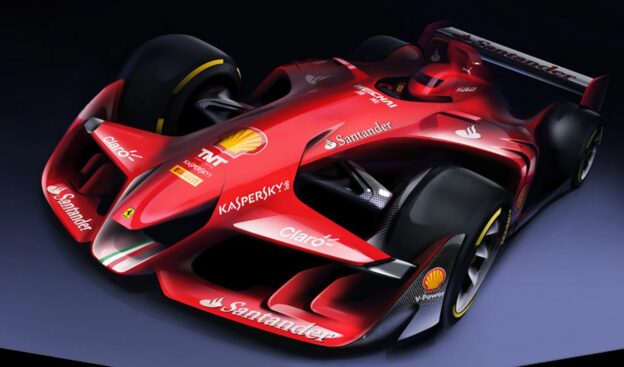Who controls the future of F1?

There are 11 teams in F1 for 2016. 8 of these are powered by Ferrari and Mercedes. This has led to fears that they are completely in control of F1’s future as they can dictate off-track voting rights and the running order.
Ferrari and Mercedes’s position strengthens their negotiating power a great deal. Who needs the other most between them and F1? Fans may be enjoying F1 for now. Those gaming in casinos in Monaco and online PayPal casinos as can be found on www.paypal-casinos.co from the stands- the punter amongst them- are betting on a bright future. However, a withdrawal by any of Mercedes, Ferrari, Renault and Honda could lead to serious negative impact in the mould of what happened after Toyota, BMW and Honda left the sport in quick succession in the past.
Presently, a power struggle is brewing in F1 following Ferrari’s decision to use their veto rights to prevent a proposal to introduce cheaper engines. Their stance suggests that they are not holding out for an amicable truce anytime soon; definitely not in the very short term.
The F1 Chief’s plans to bring in cheaper and less complicated engines by 2017 has the potential to make Mercedes and Ferrari’s power units uncompetitive. Some expect them to become obsolete. This will threaten their current customer base.
The proposal failed to sail through the F1 commission and Bernie Ecclestone has been mandated to change the rules. While the new rules are in the works, Ferrari have already issued a threat to quit F1 if engine regulations are watered down in a manner that will be detrimental to their business.
Ferrari is blocking cheaper engines largely for commercial reasons. They admitted that the plans for a cost cap on customer supplies will be detrimental for their commercial interests.
Cheaper engines are a key issue for the F1 today because middle players are struggling. The move from V8 to V6 hybrid units led to soaring supply costs. This led to the disappearance of Caterham. Manor only managed to survive while concerns about Force India and Lotus finances were common place all through 2015. Horner has had to come out to emphasise his determination to keep Red Bull in F1.
Cheaper engines will help these struggling teams survive and will also help them become more competitive because money saved could then be invested in the chassis. This sort of scenario will be a win-win for formula one bosses because a more competitive series will demand higher commercial fees from sponsors. It could equally ease pressure on the owners of F1’s commercial rights ensuring more money for the midfield teams.
It remains to be seen whether the four engine providers Mercedes, Honda, Ferrari and Renault can reach agreement on where to make savings. One thing is clear however, the future of the sport is firmly in their hands at least for now.
✅ Check out more posts with related topics:













LAST 3 F1 Fan COMMENTS